February provides an ideal opportunity to spread warmth and positivity to those around you. This issue of American Lifestyle is full of ways to help you make this month special, including ideas for cherishing loved ones, inventive tips for cooking with uncommon winter produce, two delicious chocolate-based recipes, and a comprehensive rug-buying guide.
From Valentine’s Day to Self-Love Day, February is filled to the brim with love-driven celebrations. Inside, uncover creative ways to express appreciation for yourself, your loved ones, and your home in the coming weeks and throughout the year ahead.
Have you ever avoided a certain ingredient because you didn’t know how to use it or it simply seemed strange? The enclosed guide explores the culinary potential of often overlooked seasonal ingredients such as turnips and persimmons, offering unique ideas for incorporating them into your cooking repertoire.
A delectable ingredient, chocolate has long been associated with this month and love in general. In this issue, you’ll discover two French-inspired recipes for chocolate-raspberry macarons and a chocolate-cherry clafoutis that are perfect for sharing with your loved ones.
Rugs offer an excellent means for infusing character into every corner of your home. Yet with a multitude of choices, finding the right one can become rather daunting. Delve deeper into the diverse array of rug styles to help you find the piece best suited for your space, requirements, and budget.
Here’s hoping you have a lovely month! As always, it’s a pleasure to send you this magazine.
With winter still upon us and spring yet several weeks away, February is a perfect time to dole out some positivity. After all, in addition to Valentine’s Day, this month boasts several other love-driven celebrations like Hug Day, Self-Love Day, and National Love Your Pet Day. Check out these sweet suggestions for how to celebrate to the fullest.

A good place to start is by showing yourself some love. In today’s fast-paced world, a majority of Americans struggle to reserve even just a little time for themselves each week, despite how much doing so can benefit their physical, mental, and emotional health. To avoid falling into this trap, allow yourself some “me” time, whether by reading a book you enjoy, exploring a nearby attraction, or getting together with friends. On a more macro level, take steps to ensure your personal and financial well-being by scheduling any necessary physical exams and evaluating your medical plan, homeowners insurance policy, and other coverages. (Your physician, financial expert, and insurance consultant can help you with these steps.) And to carry this positivity throughout the rest of the year, start a new, good-for-you routine that fortifies your energy and lowers your stress, such as eating a healthy breakfast or walking during your lunch hour.

February may be the shortest month, but it can seem like the longest—especially if you’re anticipating the first day of spring in March. Clear away the winter blahs by giving your home a deep clean and adding a colorful or comforting touch. For example, you could set a fresh bouquet in a pretty vase on a bookshelf or place an attractive area rug in your main living space. (Check out the rug article in this issue for ideas!) Or jump-start your spring garden by selecting which flowers and veggies you want to plant once the weather warms up again.

Make love blossom this month by sending valentines to anyone you care about. You can handcraft some by gluing delicate paper lace doilies and pressed flowers on quality paper or purchase fun three-dimensional pop-up cards. Either way, your recipients will adore receiving these thoughtful surprises. You could also express your feelings by assembling a playlist of tunes you think they’d like, collecting photos of you together, or bundling a bunch of their favorite treats. But the best gift of all might be spending quality time with your loved ones—perhaps by playing a board game, seeing a movie, or sharing a delicious meal.

For all the affection your pet shows you, they deserve just as much love and attention in return. Lavish them with extra cuddles or playtime this month, and feed them nutritious and tasty treats. You don’t want to give them chocolate—it’s toxic for many animals—but your kitty, pup, or bird will appreciate foods like freshly washed berries. Meanwhile, your guinea pig or rabbit would adore some leafy greens. Also, if you don’t have coverage already, consider getting insurance that helps pay for your pet’s regular checkups to ensure they stay healthy.

Volunteering is a great way to show you care and make a difference in your community, and studies show that volunteers can benefit too. Whether you help at your child’s school, donate to a local fundraiser, or participate in a charity walk or 5K, giving back can allow you to pick up new skills, make new friends, and even boost your health. You can find local volunteer opportunities on sites like Engage and VolunteerMatch.

Why wait until Earth Day in April to help the planet? You could start by wearing extra layers at home instead of turning up the heat or learning what your municipality can and can’t recycle so you don’t waste additional resources. To go a step further, adopt habits like avoiding single-use plastic, including straws, disposable water bottles, and plastic wraps, and buying secondhand instead of new whenever possible.
Whatever you choose to do, don’t let the love stop at the end of February. Continue showing how much you care throughout the year—even the simplest gestures can lift the hearts of your recipients.
The produce aisle of the grocery store presents a generous offering, and among the bounty are numerous seasonal options that many of us have never ventured to try. Root vegetables like turnips and fruits like persimmons are plucked from the earth in winter so ripe and full of potential only to be passed by without a glance as shoppers beeline for their typical potatoes, tomatoes, and other staples of American home cooking. And yet these fresh finds conceal delicious and nourishing characteristics just waiting to be taken advantage of.
This February, show some overlooked or even unusual seasonal produce a bit of love. These intriguing ingredients offer unique flavor profiles that every home cook will want to add to their repertoire.
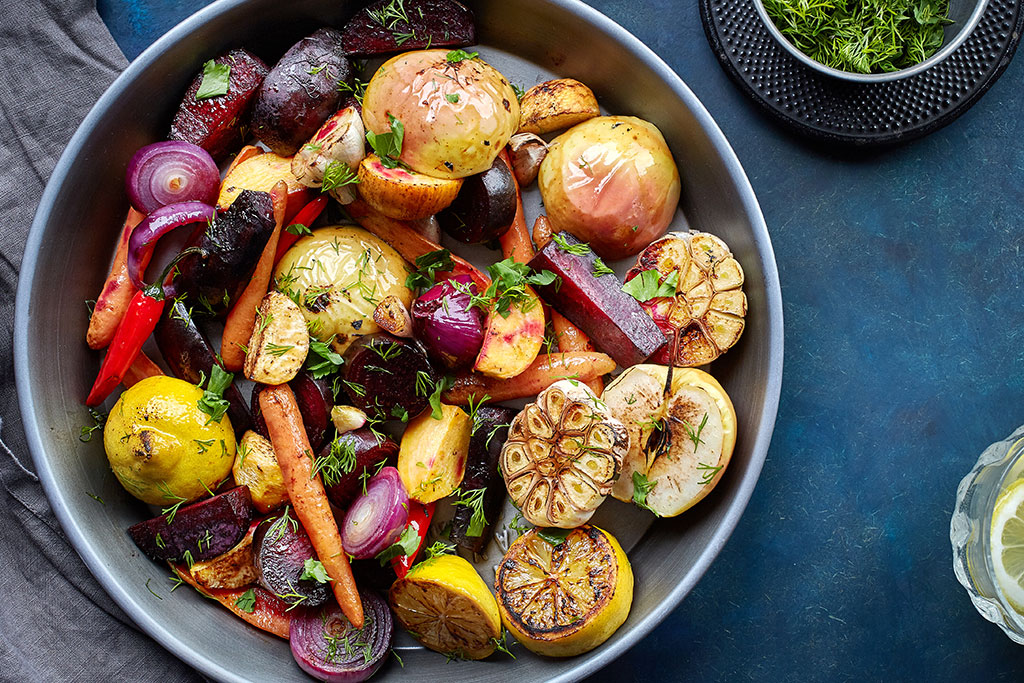
The turnip is easily recognizable with its shooting-star silhouette and white or purple bulb that comes to a fine point. Given that this root veggie is a staple of many international dishes, including German and Chinese comfort foods, it’s surprising that it is largely ignored in the United States. Detractors often snub it for tasting bitter, but they simply may not have tried it cooked. The turnip’s dense body can withstand roasting, boiling, or frying, which evolves it into a soft, velvety, and delightfully palatable vegetable with a mildly sweet and nutty flavor.
Give the turnip its proper due with a veritable litany of recipe options. Grate it into a tasty breakfast hash, or pan-fry diced bites into crisp, delicious snacks. The popular home-cook blog Food Meanderings even recommends incorporating turnips into a dessert casserole since their gentle flavor is akin to apples when sweetened and baked.
For an even softer texture and milder flavor, try kohlrabi instead. A member of the cabbage family, this vegetable resembles a turnip, is also ripe in winter, and makes for a scrumptious substitute in any of the above recipes. (Its foreign name may impress discerning dinner guests as well.)
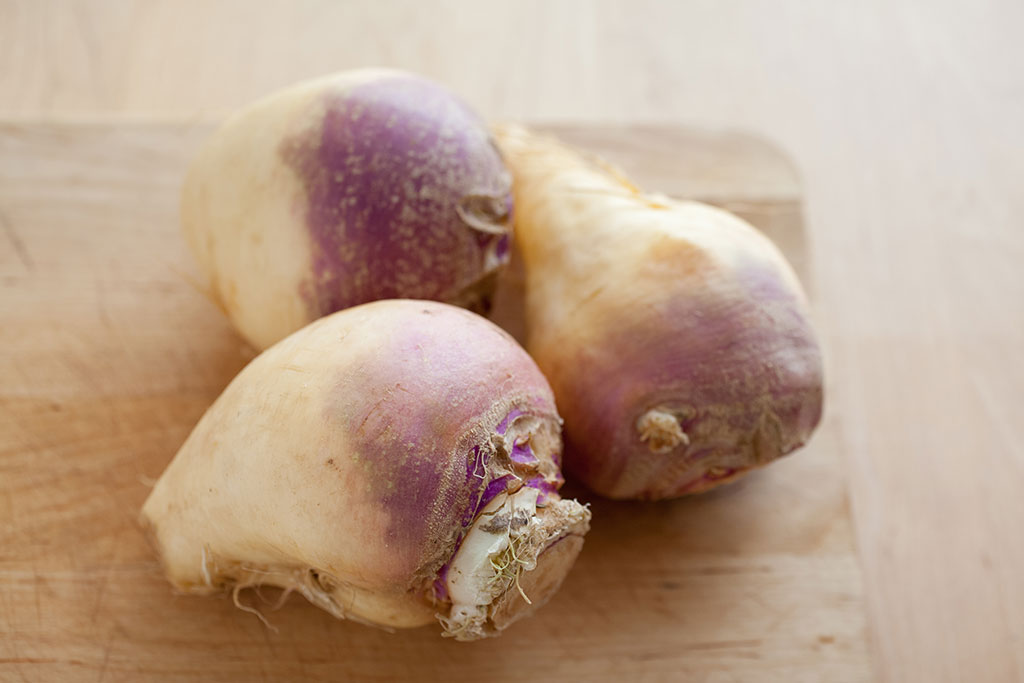
This food belongs in the category of “words I’ve heard of yet never had images to associate them with.” The rutabaga is, in fact, a yellow-brown (and occasionally purplish) bulbous root with a clumsy shape, but behind its unappealing appearance is an earthy flavor often described as a combination of carrot, cabbage, and turnip. It takes well to both fatty ingredients and fresh herbs, so for a simple sampling of this underutilized veggie, peel, dice, and then toss it with butter, salt, pepper, and your choice of savory flavors like rosemary or chives. Conversely, this is one of the rare root veggies that’s also delicious raw thanks to its crisp and moist texture similar to an apple.
Ever the understudy, rutabaga is standing by ready to substitute for just about any other root vegetable under the sun. Try it mashed as an alternative to the classic potato side, roast it as you would carrots for a refined dinner accompaniment, or add julienne cuts to stews in place of onions for a bittersweet element.
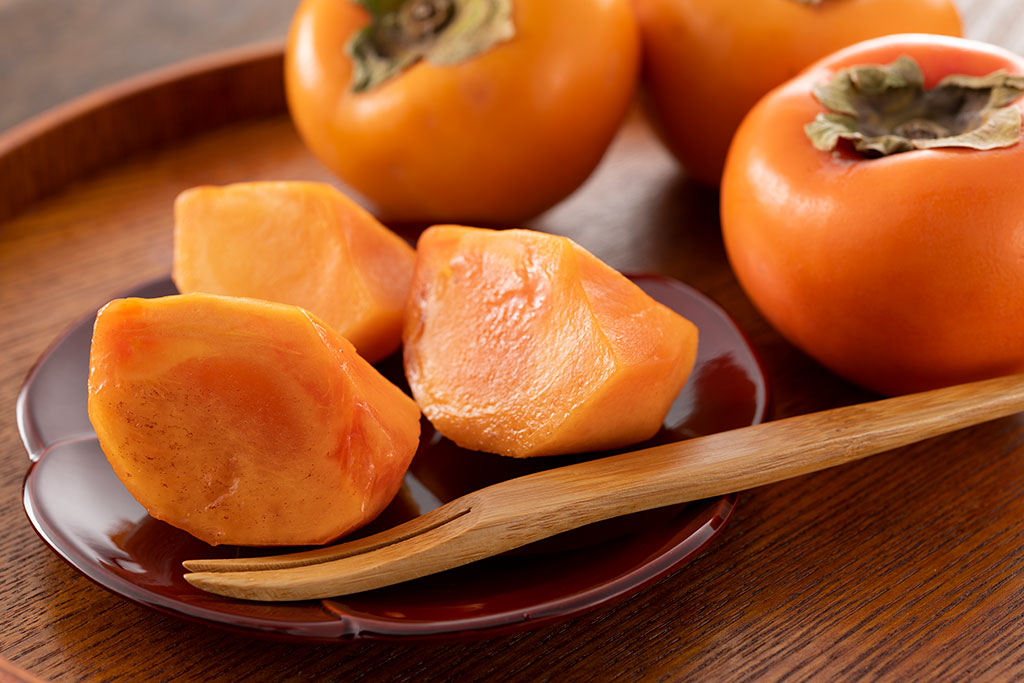
It may look like the child of an orange and a tomato, but this fruit bears little resemblance to either on the palette. In fact, nothing else tastes quite like a persimmon, so you’ll just have to try this odd produce-aisle offering for yourself. It’s very tart and firm when underripe, but its flesh becomes sweet and almost pudding-like once perfectly ripened.
As with most fruits that fit in the palm of your hand, persimmons can be eaten raw as is or sliced and added to salads or parfaits to lend an inimitable, juicy sweetness. You could also bake this fruit into a tart for a unique dessert; it takes on subtle flavors of honey or pumpkin when cooked, depending on the variety, and pairs wonderfully with warm spices such as cinnamon, star anise, and nutmeg. However you munch on or prepare this fruit, you’ll find that its delicately sweet flavor has no substitute.

If you happen to spot chicory in the produce aisle, you might balk at its gnarled roots and weed-like leaves that resemble ingredients in a witch’s brew. Passing it over would be a shame, though—this underutilized vegetable packs a splendidly potent flavor and offers enchanting potential in the kitchen.
Chicory’s peppery, somewhat bitter leaves wilt nicely without breaking down thanks to their dense fibers, but they can also be enjoyed raw in salads. The key is to treat them like kale, balancing their intensity with sweet, rich counterparts like vinaigrette dressings or buttery sauces.
As for the roots, they are primarily used to brew a morning beverage that has become popular in some circles, such as in Creole cafés and among health-food devotees. Bitter, bold, and black, a morning cup of brewed chicory root powder has a stimulating taste akin to coffee, though with a slightly nutty, almost caramel flavor. Its surging popularity can also be attributed to its health benefits, which include high fiber and prebiotics and a natural lack of caffeine. While you can certainly roast and powder your own chicory root, new converts to this coffee alternative should probably test it in packaged form first. You may very well fall in love with this underappreciated vegetable and make it a regular staple of your weekly shopping list.
Embrace the month of love with a delightful dessert duo that will bring warmth and indulgence to your table. These timeless French recipes intertwine the opulence of chocolate with the lusciousness of fresh fruit, making them the perfect addition to your celebrations.
These macarons are the epitome of decadence, striking the perfect balance between the rich allure of dark chocolate and the fruity brightness of raspberries.
A gluten-free twist on a classic French dessert, this recipe marries dark chocolate with the deep undertones of gluten-free stout beer and the tart burst of fresh cherries.
recipe by patterson watkins
photos by patterson watkins
Add a mouthwatering touch to your dessert table with these impressively rich macarons that combine just the right amount of chocolate and fruit.

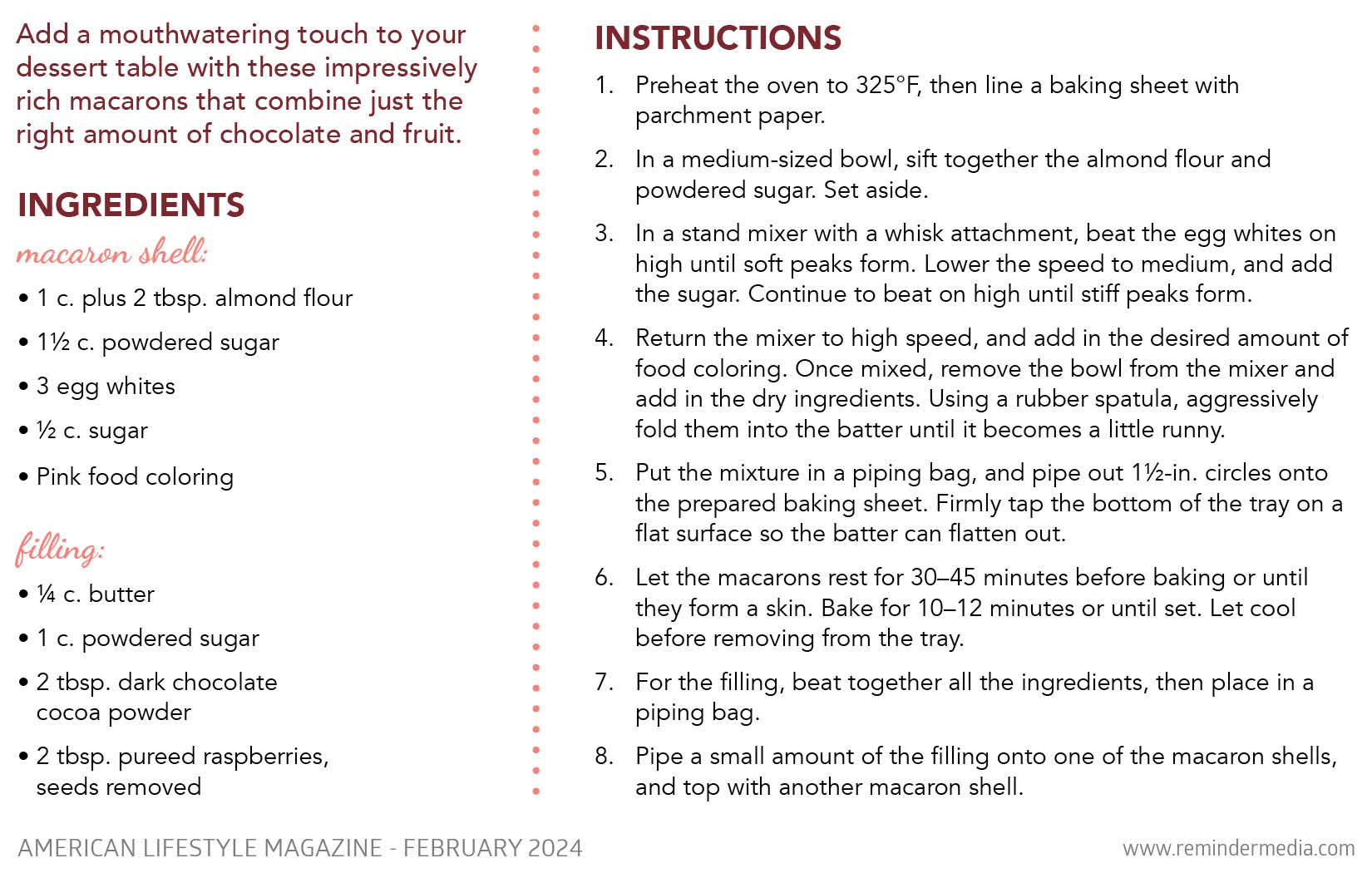



recipe by patterson watkins
photos by patterson watkins
Clafoutis is a French dessert that is part cake, part custard. This recipe uses a grain-free flour alternative as well as dark chocolate, gluten-free stout beer, and fresh cherries. Serve it spooned or sliced—it’s delicious either way.

Serves 6–8
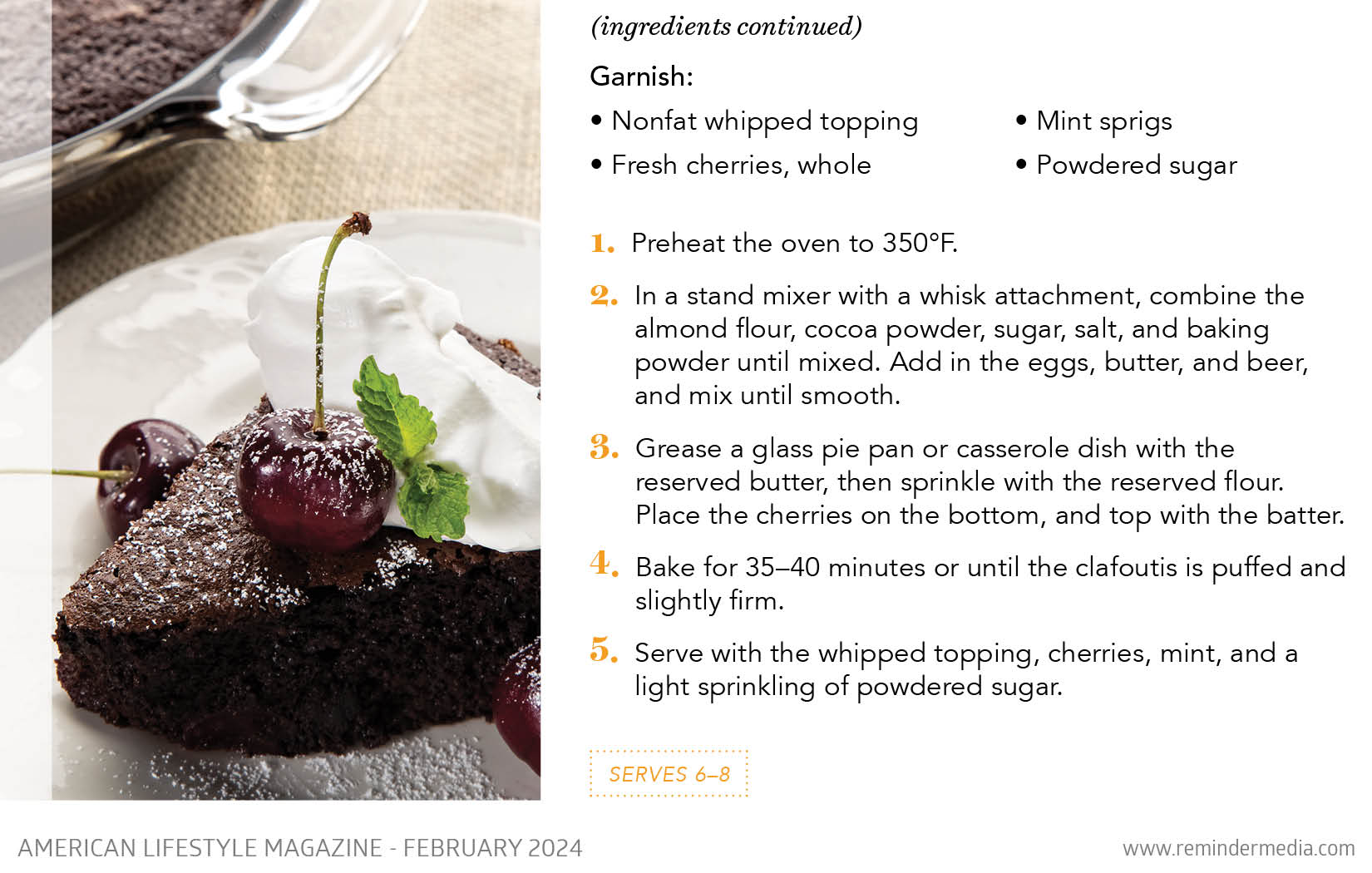



A rug is more than just a floor covering—it’s an essential design element that can transform a space, add warmth, and define an area within a room. But sifting through the many options available can be equally as daunting as it is exciting. This guide explores the different types of materials and construction methods so you can be better equipped to select the perfect rug for your home.

Known for its durability, wool is one of the most popular options for area rugs. The material is soft yet easy to clean, so these rugs can be placed in high-traffic areas such as your entryway, living room, and bedroom. However, it’s best to avoid placing one in the kitchen or bathroom since it will absorb the excess humidity in those spaces. Because they’re made from such a high-quality, luxurious material, wool rugs tend to come at a higher price, but they’re often worth the investment since you get a product that will stand the test of time; when properly taken care of, they can last for many generations.
Cotton is another common material used in rugs due to its relatively low cost, making it a more economical choice for those shopping on a budget. Plus, these rugs can be easily cleaned; some may even be machine washable. On the downside, dyed cotton can fade quickly, so they won’t necessarily last a lifetime. If you’re not looking to make a significant investment or already know you’ll swap it out in a few years, a cotton rug can work well in your kitchen or in less formal areas like a playroom.

These rugs are the epitome of luxury. Whether it makes up the entire piece or is part of a blend, silk adds a subtle sheen and softness you can’t beat. But because of the material’s delicate nature, a silk rug requires more maintenance than others and will likely start to show footprints over time, making it ideal for low-traffic spaces only. You will also need to have it professionally cleaned to avoid damaging the fragile fibers.
The most affordable option on the market, rugs made from synthetic materials such as polyester, nylon, acrylic, or polypropylene are durable and easy to clean, making them a great choice for any area in your home. As a bonus, some can be machine washable since they tend to be relatively sturdy. They’re generally thinner than other rugs, though, so you may want to layer multiple rugs of different sizes or add a thicker pad underneath to give them a cushier feel. And while synthetic material can be a good imitation of the look of natural fibers, you’ll want to check the pile (the density of the fibers) to ensure you’re getting a rug that feels as luxurious as the real deal.

Sisal, jute, and seagrass have become increasingly popular options for indoor rugs due to their rustic and natural appearance; their highly textured and thick weaves distinguish them from traditional flat-weave area rugs. Often a more affordable choice, such rugs allow you to cover a wide area, like in your living room, for a lower cost. Just note that they should be kept out of high-humidity areas since these materials absorb water and may be susceptible to mold and mildew.
Apart from the material, the construction method can have a huge impact on the quality and longevity of a rug. Hand-knotted rugs, for instance, have minimal shedding and can last for decades because they are meticulously crafted by hand, one knot at a time, and can take months or even years to complete. (Consequently, they are typically the most expensive type of rug.) Similarly, tufted rugs—in which the pile is cut off to create a shaggier texture and feel—can also last for years and have a good cushion, though they do tend to shed a bit at first.
For more affordable construction options, you’ll want to look for flat-weave or machine-made rugs. Flat-weave rugs are woven on a loom and don’t have a pile or any knots; this makes them a great choice for entryways because your front door can easily clear them. They’re also lightweight, durable, and reversible. As for machine-made rugs, they are arguably the most affordable type of area rug since they can be produced relatively quickly and inexpensively. You can find these two types of rugs in a wide range of styles and materials, but they aren’t as durable as hand-knotted or tufted rugs.
Choosing a new rug doesn’t have to be complicated. Simply consider your room’s purpose and traffic level and your budget to determine which material and construction method is the best fit for your needs.








